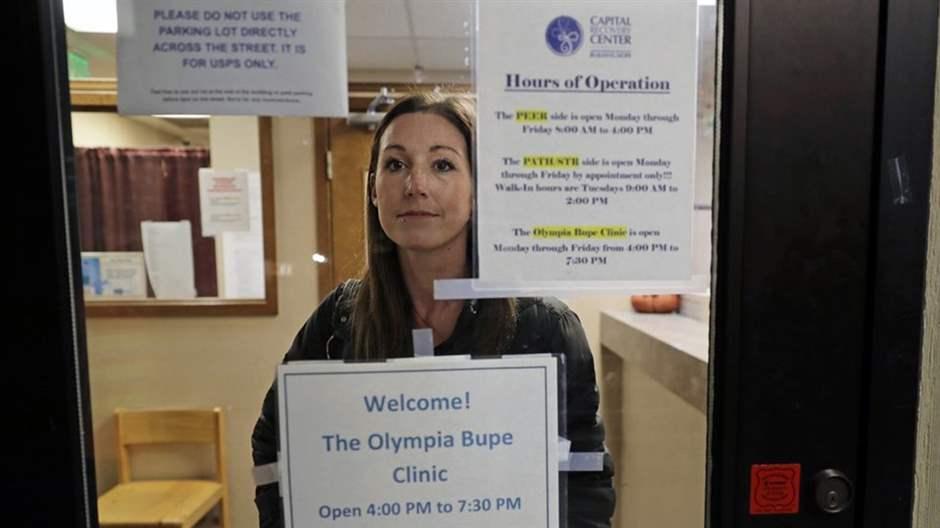Washington State Program Lowers Barriers to Treatment for Opioid Use Disorder Patients
Olympia Bupe Clinic makes effective medication easier to get for those most at risk

State and local leaders can better invest in evidence-based programs to combat opioid use disorder (OUD) when they understand how to most effectively prevent overdose deaths, provide treatment, and ensure that communities have the resources they need. Amid an ongoing national opioid overdose crisis made worse by the COVID-19 pandemic, many community initiatives are working to limit overdoses and save lives.
The substance use prevention and treatment initiative of The Pew Charitable Trusts is supporting six such initiatives over the next two years in a partnership focused on helping them to evaluate their programs and encouraging broader adoption of successful innovative models.
This profile is part of a series.
Removing obstacles at Capital Recovery Center’s Olympia Bupe Clinic
Capital Recovery Center (CRC), a nonprofit community mental health agency in Olympia, Washington, provides various services to people working toward recovery from substance use disorders and mental health conditions using a “peer-to-peer” model of support. Among these services are peer counseling, support groups, employment support, and outreach to individuals facing homelessness, the risk of continued substance use, and involvement with the justice system. These “wraparound services” help to treat the whole person.
The Olympia Bupe Clinic (OBC), a unit within CRC, is a walk-in evening clinic set up to reduce barriers to accessing buprenorphine, an effective medication for OUD approved by the Food and Drug Administration. Buprenorphine can cut the risk of opioid overdose death by at least 50%. At OBC, medical professionals work in partnership with “peers”—people in recovery themselves—who assist patients in obtaining insurance, ID cards, and transportation, act as patients’ advocates in clinical decision-making, and help to transfer them to residential and outpatient treatment programs as needed.
CRC’s leaders designed the clinic on harm-reduction principles, focusing on strategies to reduce the negative consequences associated with drug use. OBC adheres to the philosophy that buprenorphine should be easier to access than illicit opioids, so the founders worked toward eliminating all possible barriers to starting and continuing treatment.
Visits and medication are provided at no cost regardless of insurance status. A staff of community medical professionals prescribe the medication, which is dispensed on site starting with the initial visit. And continued substance use does not exclude patients from ongoing buprenorphine prescriptions.
The clinic prioritizes patients at the highest risk of adverse personal or social consequences of untreated OUD, including pregnant people and those with children, people who have recently been incarcerated or have overdosed, and those with complex medical conditions. The clinic, launched in January 2019, served more than 1,200 patients in its first two years and has remained open during the pandemic with safety precautions and the addition of telemedicine visits.
Evaluating the low-barrier approach
With support from Pew, and in partnership with the University of Washington’s Addictions, Drug & Alcohol Institute and Saint Martin’s University in Lacey, OBC is seeking to better understand how its approaches work for patients. In a quantitative evaluation, the center and its partners will assess outcomes in new patients who start care during a two-year study period, comparing pre- and post-care levels of emergency health care utilization and incarceration using secondary data sources. They will also evaluate changes in self-reported quality of life, mental and physical health, and illicit substance use via patient surveys.
Using qualitative methods, OBC will analyze its processes, interviewing staff and patients to better understand the clinic experience and which features are most conducive to positive patient outcomes. They also will explore patients’ beliefs about treatment and recovery so that the evaluation can incorporate broader definitions of retention and success.
The evaluation project will run through 2022. Dissemination of results will follow.
For more on this initiative, please contact Leslie Paulson, [email protected].
Beth Connolly is the project director and Leslie Paulson is an officer with the Pew Charitable Trusts’ substance use prevention and treatment initiative.











